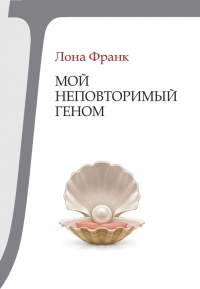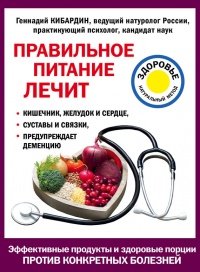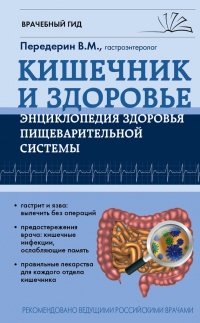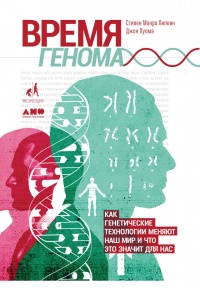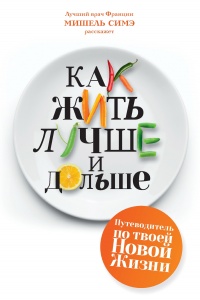Ознакомительная версия. Доступно 13 страниц из 62
Eiseman, B., et al. “Fecal Enema as an Adjunct in the Treatment of Pseudomembranous Enterocolitis”. Surgery 44.5 (1958): 854–859. Print.
Evans, C. C., et al. “Exercise Prevents Weight Gain and Alters the Gut Microbiota in a Mouse Model of High Fat Diet-Induced Obesity”. PLoS One 9.3 (2014): e92193. Print.
Faith, J. J., et al. “The Long-Term Stability of the Human Gut Microbiota”. Science 341.6141 (2013): 1237439. Print.
Fontana, R. J. “Acute Liver Failure Including Acetaminophen Overdose”. Med Clin North Am. 92.2 (2008): 761–794. Print.
Frieden, Thomas. “Antibiotic Resistance and the Threat to Public Health”. Energy and Commerce Subcommittee on Health 2010 of United States House of Representatives. Print.
Fujimoto, T., et al. “Decreased Abundance of Faecalibacterium prausnitzii in the Gut Microbiota of Crohn’s Disease”. J Gastroenterol Hepatol 28.4 (2013): 613–619. Print.
Gareau, M. G., et al. “Bacterial Infection Causes Stress-Induced Memory Dysfunction in Mice”. Gut 60.3 (2011): 307–317. Print.
Goehler, L. E., et al. “Campylobacter Jejuni Infection Increases Anxiety-Like Behavior in the Holeboard: Possible Anatomical Substrates for Viscerosensory Modulation of Exploratory Behavior”. Brain Behav Immun22.3 (2008): 354–366. Print.
Goudarzi, M., et al. “Clostridium difficile Infection: Epidemiology, Pathogenesis, Risk Factors, and Therapeutic Options”. Scientifica 2014 (2014): 916826. Print.
Haiser, H. J., et al. “Predicting and Manipulating Cardiac Drug Inactivation by the Human Gut Bacterium Eggerthella Lenta”. Science 341.6143 (2013): 295–298. Print.
Hao, Q., et al. “Probiotics for Preventing Acute Upper Respiratory Tract Infections”. Cochrane Database Syst Rev. 9 (2011): Cd006895. Print.
Hehemann, J. H., et al. “Bacteria of the Human Gut Microbiome Catabolize Red Seaweed Glycans with Carbohydrate-Active Enzyme Updates from Extrinsic Microbes”. Proc Natl Acad Sci U S A 109.48 (2012): 19786–19791. Print.
Herbst, T., et al. “Dysregulation of Allergic Airway Inflammation in the Absence of Microbial Colonization”. Am J Respir Crit Care Med 184.2 (2011): 198–205. Print.
Hesselmar, B., et al. “Pacifier Cleaning Practices and Risk of Allergy Development”. Pediatrics 131.6 (2013): e1829–е1837. Print.
Hoskin-Parr, L., et al. “Antibiotic Exposure in the First Two Years of Life and Development of Asthma and Other Allergic Diseases by 7.5 Yr: A Dose-Dependent Relationship”. Pediatr Allergy Immunol 24.8 (2013): 762–771. Print.
Hsiao, E. Y., et al. “Microbiota Modulate Behavioral and Physiological Abnormalities Associated with Neurodevelopmental Disorders”. Cell 155.7 (2013): 1451–1463. Print.
Husnik, F., et al. “Horizontal Gene Transfer from Diverse Bacteria to an Insect Genome Enables a Tripartite Nested Mealybug Symbiosis”. Cell 153.7 (2013): 1567–1578. Print.
Iida, N., et al. “Commensal Bacteria Control Cancer Response to Therapy by Modulating the Tumor Microenvironment”. Science 342.6161 (2013): 967–970. Print.
Insel, Thomas. “The Top Ten Research Advances of 2012”. National Institute of Mental Health Director’s Blog 2012. Web.
Ip, S., et al. “Breastfeeding and Maternal and Infant Health Outcomes in Developed Countries”. Evid Rep Technol Assess (Full Rep) 153 (2007): 1–186. Print.
Johansson, M. E., et al. “Bacteria Penetrate the Normally Impenetrable Inner Colon Mucus Layer in Both Murine Colitis Models and Patients with Ulcerative Colitis”. Gut 63.2 (2014): 281–291. Print.
Johnston, G. W., and H. W. Rodgers. “Treatment of Chronic Portal-Systemic Encephalopathy by Colectomy”. Br J Surg 52 (1965): 424–426. Print.
Kashyap, P. C., et al. “Complex Interactions among Diet, Gastrointestinal Transit, and Gut Microbiota in Humanized Mice”. Gastroenterology 144.5 (2013): 967–977. Print.
Kendall, A. I. “The Bacteria of the Intestinal Tract of Man”. Science 42.1076 (1915): 209–212. Print.
Koenig, J. E., et al. “Succession of Microbial Consortia in the Developing Infant Gut Microbiome”. Proc Natl Acad Sci U S A 108 Suppl 1 (2011): 4578–4585. Print.
Koeth, R. A., et al. “Intestinal Microbiota Metabolism of L–Carnitine, a Nutrient in Red Meat, Promotes Atherosclerosis”. Nat Med 19.5 (2013): 576–585. Print.
Koren, O., et al. “Host Remodeling of the Gut Microbiome and Metabolic Changes During Pregnancy”. Cell 150.3 (2012): 470–480. Print.
Kozyrskyj, A. L., P. Ernst, and A. B. Becker. “Increased Risk of Childhood Asthma from Antibiotic Use in Early Life”. Chest 131.6 (2007): 1753–1759. Print.
Kuoliok, K. E. Food and Emergency Food in the Circumpolar Area. Almquist och Wiksell, 1969. Print.
Le Chatelier, E., et al. “Richness of Human Gut Microbiome Correlates with Metabolic Markers”. Nature 500.7464 (2013): 541–546. Print.
Lee, S. M., et al. “Bacterial Colonization Factors Control Specificity and Stability of the Gut Microbiota”. Nature 501.7467 (2013): 426–429. Print.
Lee, Y. K., et al. “Proinflammatory T-Cell Responses to Gut Microbiota Promote Experimental Autoimmune Encephalomyelitis”. Proc Natl Acad Sci U S A 108 Suppl 1 (2011): 4615–4522. Print.
Lewis, S. J., and K. W. Heaton. “Stool Form Scale as a Useful Guide to Intestinal Transit Time”. Scand J Gastroenterol 32.9 (1997): 920–924. Print.
Ley, R. E., et al. “Obesity Alters Gut Microbial Ecology”. Proc Natl Acad Sci U S A 102.31 (2005): 11070–11075. Print.
Lin, A., et al. “Distinct Distal Gut Microbiome Diversity and Composition in Healthy Children from Bangladesh and the United States”. PLoS One 8.1 (2013): e53838. Print.
Lin, P. W., and B. J. Stoll. “Necrotising Enterocolitis”. Lancet 368.9543 (2006): 1271–1283. Print.
Lyte, M., et al. “Induction of Anxiety-Like Behavior in Mice During the Initial Stages of Infection with the Agent of Murine Colonic Hyperplasia Citrobacter Rodentium”. Physiol Behav 89.3 (2006): 350–357. Print.
Machiels, K., et al. “A Decrease of the Butyrate-Producing Species Roseburia Hominis and Faecalibacterium Prausnitzii Defines Dysbiosis in Patients with Ulcerative Colitis”. Gut 63.8 (2014): 1275–1283. Print.
Marcobal, A., “Bacteroides in the Infant Gut Consume Milk Oligosaccharides via Mucus-Utilization Pathways”. Cell Host Microbe 10.5 (2011): 507–514. Print.
Martens, E. C., et al. “The Devil Lies in the Details: How Variations in Polysaccharide Fine-Structure Impact the Physiology and Evolution of Gut Microbes”. J Mol Biol (2014). Print.
Ознакомительная версия. Доступно 13 страниц из 62




















